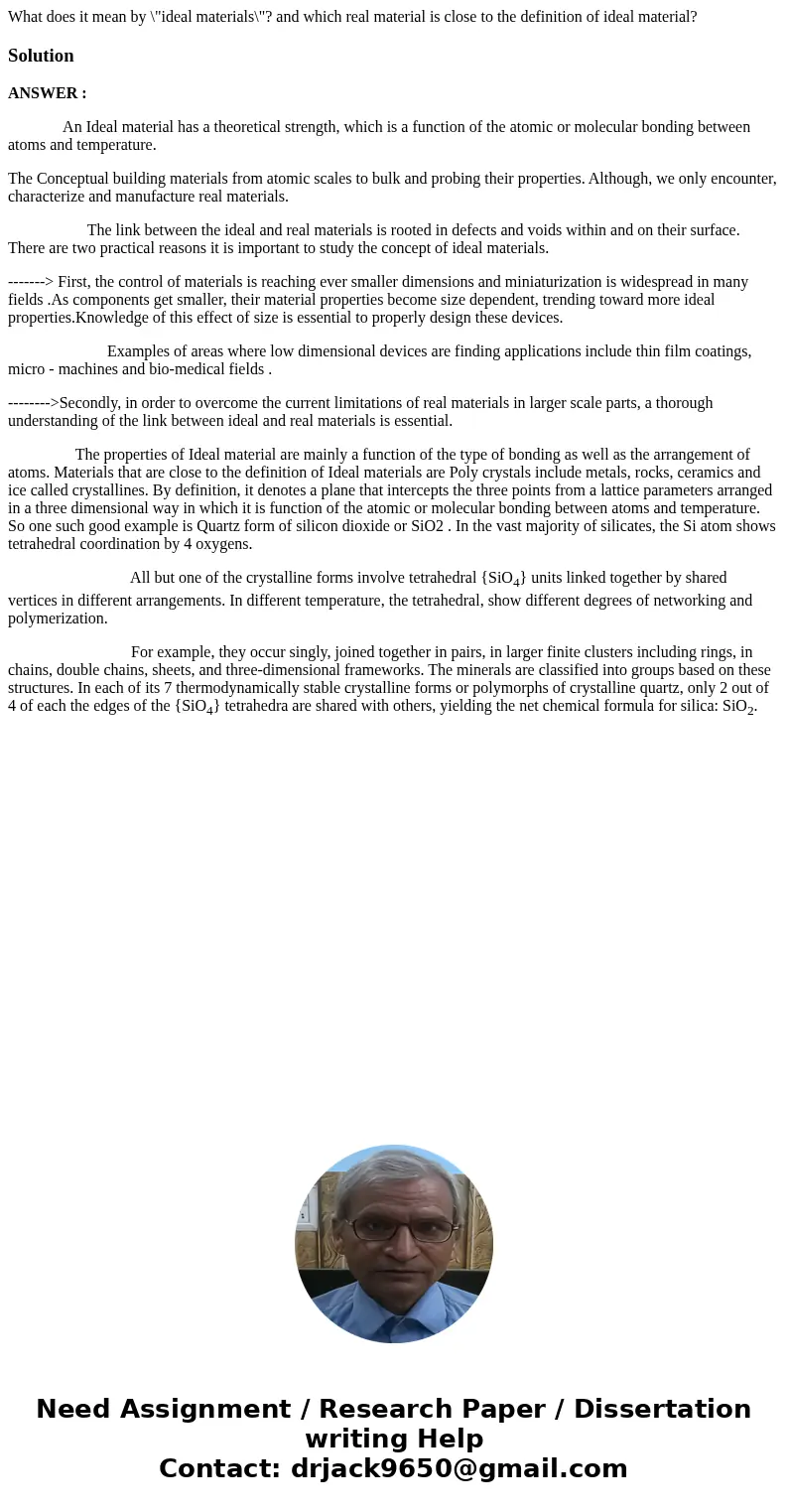What does it mean by ideal materials and which real material
Solution
ANSWER :
An Ideal material has a theoretical strength, which is a function of the atomic or molecular bonding between atoms and temperature.
The Conceptual building materials from atomic scales to bulk and probing their properties. Although, we only encounter, characterize and manufacture real materials.
The link between the ideal and real materials is rooted in defects and voids within and on their surface. There are two practical reasons it is important to study the concept of ideal materials.
-------> First, the control of materials is reaching ever smaller dimensions and miniaturization is widespread in many fields .As components get smaller, their material properties become size dependent, trending toward more ideal properties.Knowledge of this effect of size is essential to properly design these devices.
Examples of areas where low dimensional devices are finding applications include thin film coatings, micro - machines and bio-medical fields .
-------->Secondly, in order to overcome the current limitations of real materials in larger scale parts, a thorough understanding of the link between ideal and real materials is essential.
The properties of Ideal material are mainly a function of the type of bonding as well as the arrangement of atoms. Materials that are close to the definition of Ideal materials are Poly crystals include metals, rocks, ceramics and ice called crystallines. By definition, it denotes a plane that intercepts the three points from a lattice parameters arranged in a three dimensional way in which it is function of the atomic or molecular bonding between atoms and temperature. So one such good example is Quartz form of silicon dioxide or SiO2 . In the vast majority of silicates, the Si atom shows tetrahedral coordination by 4 oxygens.
All but one of the crystalline forms involve tetrahedral {SiO4} units linked together by shared vertices in different arrangements. In different temperature, the tetrahedral, show different degrees of networking and polymerization.
For example, they occur singly, joined together in pairs, in larger finite clusters including rings, in chains, double chains, sheets, and three-dimensional frameworks. The minerals are classified into groups based on these structures. In each of its 7 thermodynamically stable crystalline forms or polymorphs of crystalline quartz, only 2 out of 4 of each the edges of the {SiO4} tetrahedra are shared with others, yielding the net chemical formula for silica: SiO2.

 Homework Sourse
Homework Sourse